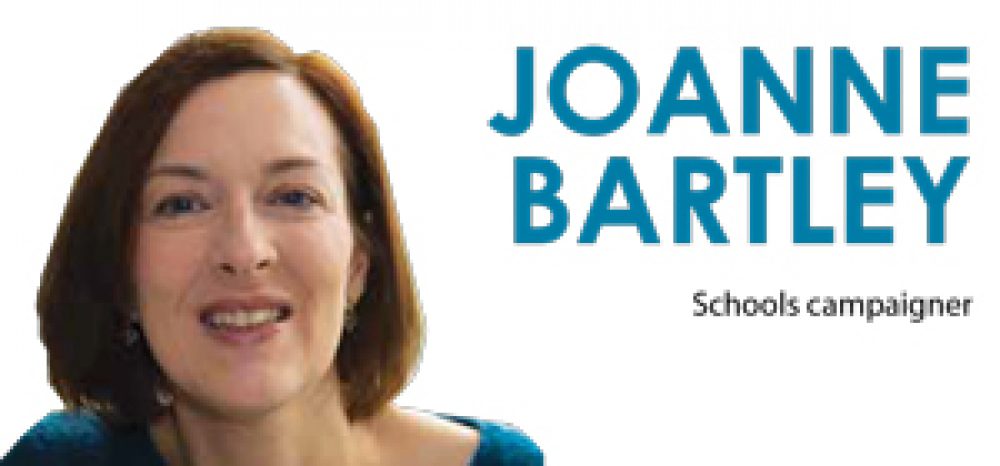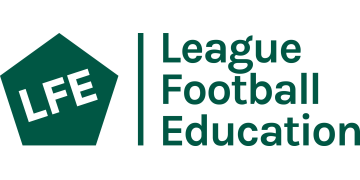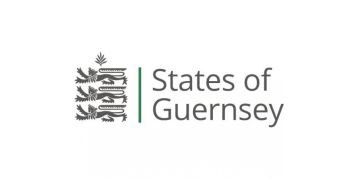After tirelessly questioning council officials and probing internet archives, anti-selection campaigner Joanne Bartley questions the fairness of England’s first grammar school ‘expansion’.
When Nicky Morgan stood in parliament on October 19th 2015 to approve the controversial Weald of Kent grammar school expansion, she said: ‘‘I assessed the proposal in line with our guidelines on making significant changes to an existing academy.’
Months later I was pouring over the details of those guidelines and finding evidence that the school did not fulfil the consultation requirements.
I live in Kent, and think that assessing children as ‘suitable for high school’ or ‘suitable for grammar school’ aged ten is divisive and unnecessary. So when I learned that a grammar school in Tonbridge was to be allowed to build an ‘annexe’ in another town this bothered me. New grammar schools are not allowed under current law, and I felt sure someone would say this was a new selective school. No other school I knew had an ‘extension’ in a different town with a nine-mile gap between buildings.
New grammar schools are not allowed under current law
I wanted to have a say on this plan, so I looked at Kent County Council’s school consultation web page. There were many school changes listed for consultation. Maybe I’d missed this particular consultation? I looked at the records of previous consultations, but there were no details of any consultation on the Weald of Kent annexe.
I wrote to the council to ask whether they offered an online consultation on the Weald of Kent plan. The reply was simple: it said there was no such consultation and then he told me that the deadline for a legal challenge to the school “expired on 15 January 2016”.
That was an odd reply. I wasn’t even asking about a legal challenge. Also, why was there no consultation? If this controversial school was wanted, why not give everyone a say?
I assumed the school must have had local support, so on January 24th I asked the Weald of Kent school about its consultation results. The ‘What Do They Know’ website lets anyone make a Freedom of Information easily, so I logged in and put my question: ‘What were the results of your consultations on plans to open an annexe in Sevenoaks?’ The site said I should expect to receive a reply in no more than 20 days.
Mr Honeyman, a Kent County Council lawyer, responded on behalf of the school. The 20 days eventually stretched to three months and 27 days, as I sought an answer to this simple question. I started to feel I was getting to know Mr Honeyman as our correspondence was so regular. In March he took a long holiday, and apparently no one else was able to help while he was away, so the whole process ground to a halt. When he returned I asked if he’d had a good break, and we got back to it, the saga of the consultation results continued.
That was an odd reply; I wasn’t even asking about a legal challenge
The school did provide details of a consultation from July 2013. The results were based on a plan for a boys and girl’s annexe, at a time when both the Weald of Kent grammar school and another grammar school, Invicta, applied for an expansion. I knew the Sevenoaks Grammar School campaign talked about the distances boys travelled to grammar schools, so both offered a plan to help boys.
This plan for a co-educational annexe was waylaid when Michael Gove, then education secretary, said it wasn’t a genuine expansion if a girl’s grammar school was educating boys. So the Weald of Kent school tried a new plan, they surveyed parents to try to turn their original grammar school co-educational. The plan failed as a majority of parents wanted the school to stay girls only. Hence, the school could only apply for a girl’s annexe.
In autumn 2014 the school submitted a new plan for a girl’s only expansion in Sevenoaks. There were already two girls’ grammar schools just nine miles from Sevenoaks. It seemed unlikely the community would support an annexe just for girls when the campaign stressed the problem of boys travelling to grammar schools.
So I again wanted to know what the results were when the Weald of Kent for views on this girls-only plan. There was a consultation in September 2014, but the school seemed reluctant to provide the results.
I felt sure the school must have used these results in their annexe proposal (the one that got agreed), because the ‘significant changes to an existing academy guidelines’ mentioned by Nicky Morgan said that an academy must consult parents at the school, other school leaders, and the community for a minimum of four weeks.
Mr Honeyman finally replied with a table copy-pasted from an Excel file. The formatting was messed up and it barely made sense. But a week later the facts were confirmed. The most controversial school expansion in recent history was supported by just 59 parents with 44 parents saying no to the Sevenoaks annexe. This school which was setting a precedent to change selective education in our country, was supported by a few dozen parents, and only a small majority liked the idea.
I was starting to feel sorry for poor Mr Honeyman. But my requests for information went on. I asked for the dates of this consultation and found it ran for only two weeks not the four weeks required by government guidelines. It was also clear the school didn’t consult with the community, other school leaders, or any of the other stakeholders listed in that document.
I decided the school must have given Nicky Morgan the consultation results from their co-ed plan from back in 2013. But I noticed that the consultation result from this time was not specific to the Weald of Kent school. The Invicta school in Maidstone also submitted an annexe plan, so I wondered if the results were based on support for that school? I was tired of waiting for answers, so I looked at the Sevenoaks Grammar School campaign website from 2013. The posts of the time didn’t mention the Weald of Kent school at all. That was odd. Surely the Sevenoaks campaigners should be telling everyone to support the Weald of Kent’s consultation?
I was starting to feel sorry for poor Mr Honeyman
I turned into a bit of an online detective and typed ‘Sevenoaksgrammar.com’ into an internet archive website. I couldn’t believe what I found. The records showed many deleted blog posts from June and July 2013 with the Sevenoaks campaigners saying, ‘Vote no to the Weald of Kent’ annexe.’ The deleted web pages also listed consultation documents that the school hadn’t provided in response to my FOI. I realised there were 4 questions in the original 2013 consultation. The school had only provided me with the results of 3 questions.
I went back to Mr Honeyman and pointed out these facts. I asked for the full results of the consultation, and enquired about the fourth question. He sent me a document showing all four questions.
The missing question 4 was ‘Do you support the Weald of Kent Grammar School Trust proposal to open an Annexe in Sevenoaks?’
Mr Honeyman tells me the school has lost the answers to this question.
I don’t know if the school used this question’s results in their business case proposal to the Department for Education because the Department won’t release it. I don’t know if the school told Nicky Morgan that only 59 parents actually wanted the school. I doubt they told her the consultation was half the length it was supposed to be. And I assume they didn’t tell her that the school overlooked its requirement to ask the broader community for its views.
The council is paying £19.1 million for this ‘annexe’. It cannot use government education funding because it cannot prove a genuine need for secondary places in Sevenoaks. Many of Kent’s non-selective schools are rated as ‘requires improvement’ so I do not feel our council’s priority should be expanding its selective schools. However good they are they do not educate all children. And, of course, I feel this is no real ‘school expansion’ but an unlawful new grammar school. That council official told me back in January that the 90 day deadline for a judicial (legal) review had passed. The school has so far taken 118 days with my FOI request. How can anyone ever challenge anything when simple information takes this long to be provided?
Building work will begin on the Sevenoaks annexe in a week or two. I am sure many grammar schools will expand with annexe sites just like the Weald of Kent did. I hope future plans will involve full transparency and proper consultation. In Sevenoaks the boys will continue to travel long distances to school, many Weald of Kent parents will deal with the unwanted miles wide gap in their ‘school’, and everyone in Kent will pay for a school expansion no one actually needs.







This is a great article and shows that adequate consultation has not been given before this annexe was considered for building. That coupled with the fact that there are over 30%surplus school places in Sevenoaks means this is not needed and a significant waste of tax payers money.
If patents did not want grammar schools they would close down. But they are oversubscribed with parents in Areas without grammar schools either moving to selective areas or commuting miles. Who are you to decide what parents want! No doubt if parents do not like what the controlling party on Kent County Council they will vote them out. That’s called democracy!
Parents don’t choose grammars; grammars choose the children. The reason most areas of the country went comprehensive all those years ago was because parents complained their children only had a one-in-four chance of getting a grammar place and realised a comprehensive system was fairer for all. And it didn’t tell children they were failures at age 10.
The democracy you talk about allows parents of the one-in-four to tell parents of the three-in-four that their children must attend secondary moderns which, however good they may be, will always be regarded as second tier schools for second tier children.
International evidence shows that countries which perform well in the three-yearly PISA test (the gold standard coveted by the Government) tend not to segregate children according to academic ability until at least upper secondary (age 15/16). The earlier selection occurs, the greater the effect of socio-economic background.
Democracy exists within a legal framework of rules that constrains the society it serves. What Joanne documents in fine detail is how a ruling elite can choose to ignore said constraints to get their self-serving way. As the multiple investigations by police services into the financial misdemeanours of conservative candidates in last year’s elections show, criminal activity can be investigated. So we must move towards similar powers for the investigation of local authority activities where deliberate malfeasance is evident.
How convenient that consultation answers were lost.
Anyone who has taught before knows that you cannot teach properly to a group of children which are very different in abilities and knowledge. A teacher normally has to pitch the level at the average level of the group. That’s why children who passed the Kent test will learn more in a class of grammar school, because the average level is higher, than a class of children in a non-grammar school. Is it fair to the bright children that they have to be dragged down and learn very little in their secondary education because they are a minority, and therefore their needs are not considered? Other countries have opportunities of special education for the ones who are very bright to go to, for more advanced learning, while the ones who are just brighter than the average can go to schools which have strong academic performances, and the ones who are average can go to average schools, and so on. Every population will have a bell curve of people of different levels of intelligence — only countries like the UK will not see the value of encouraging the intelligent ones to develop more in secondary schools, and scrap the gifted and talented programme a few years ago due to the lack of funding!
I live in Sevenoaks and would definitely have voted in favor of the Weald of Kent grammar school annex had I been consulted.
Like it or not, Kent operates a grammar school system and it’s unjust to expect children from the town to have longer days and travel over 9 miles to the nearest grammar school. Sevenoaks if one of the only major towns in Kent without local grammar school provision.